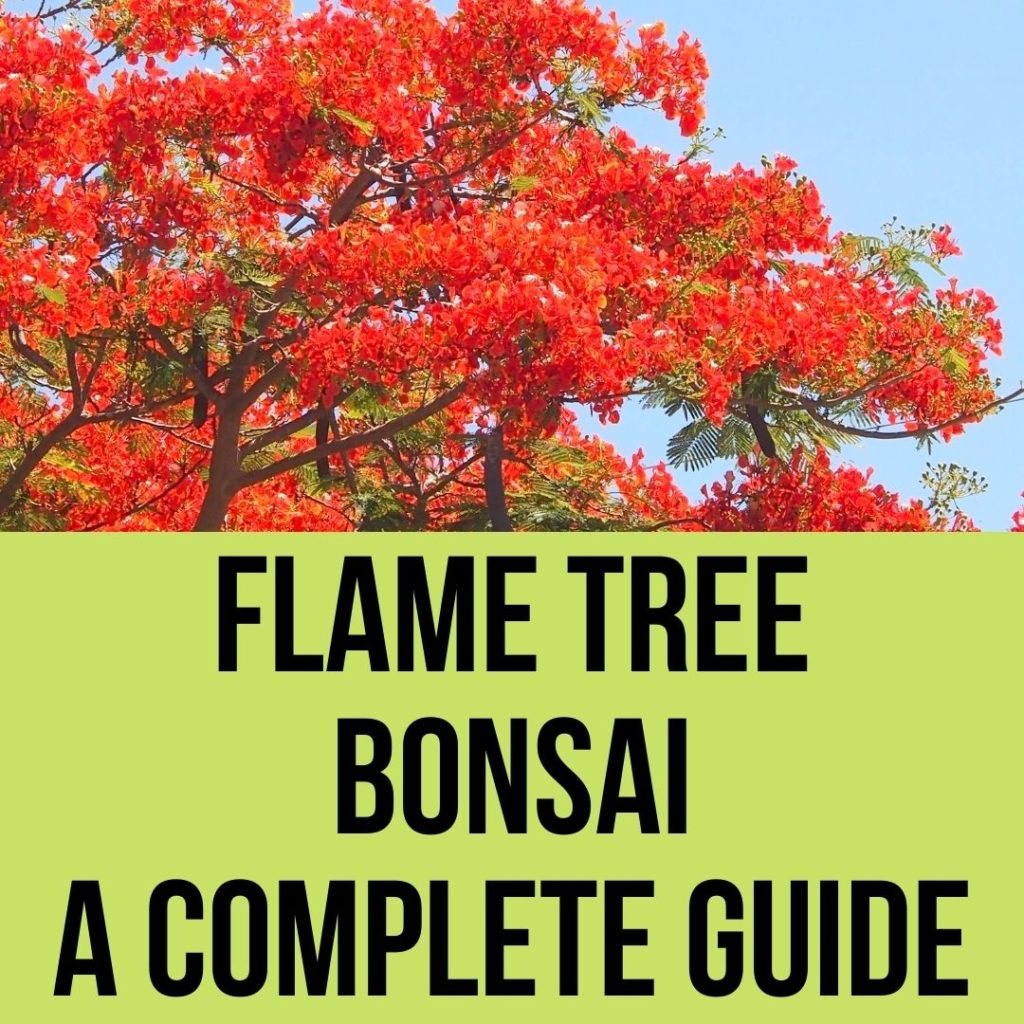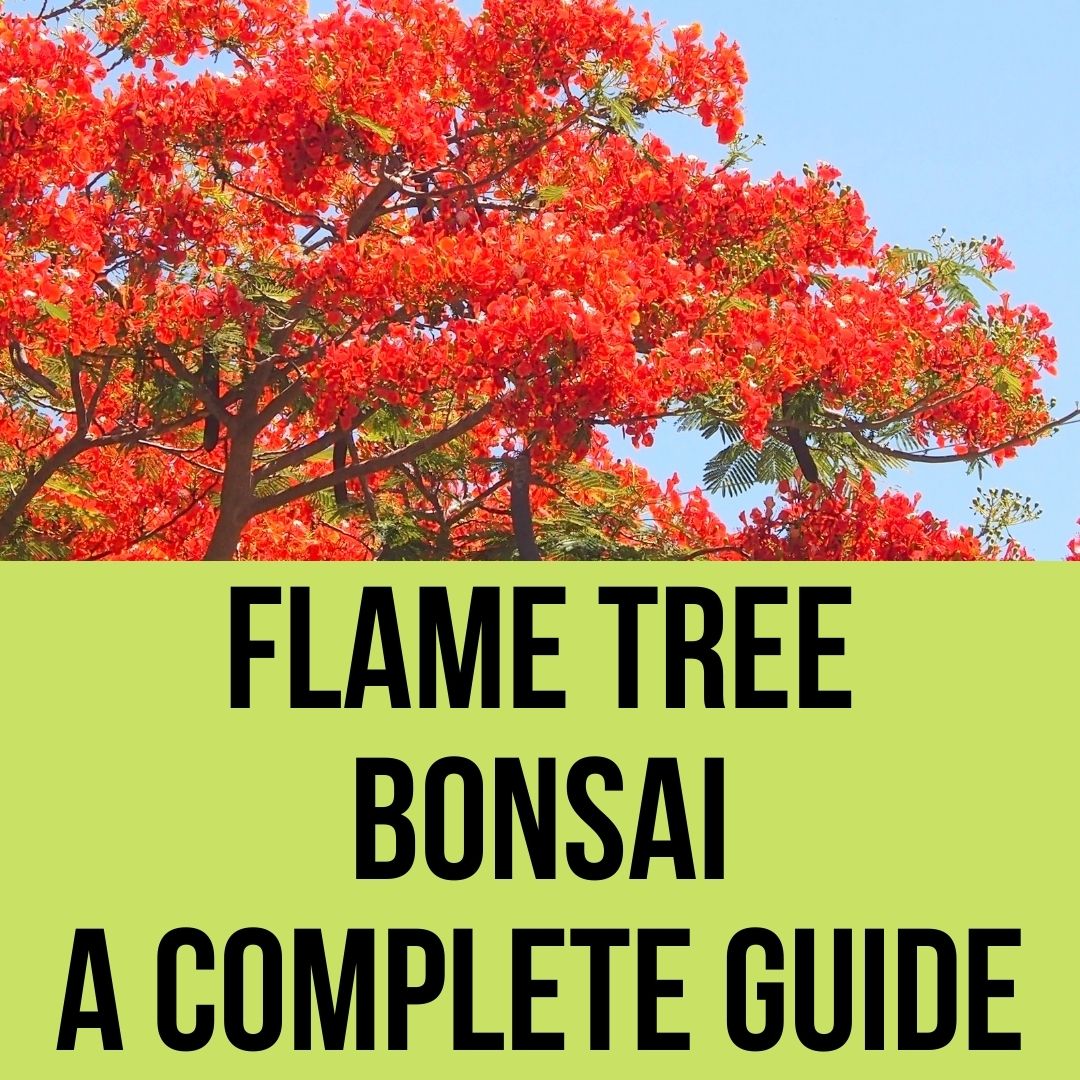Flame trees might be a fitting option for your next bonsai collection. Besides if you are a fan of flame trees ornamental red umbrella look, doing bonsai of it might be best for you. One of the main goals of the bonsai is to give your tree an aesthetic look. Bonsai trees look older and you can grow them in a small place.
Today we will tell you how to grow flame tree bonsai. The whole process will be described step by step.
Delonix regia, royal poinciana, flame tree, it goes by many names. Normally it’s grown as an ornamental tree in many tropical and subtropical parts of the world. Flame tree is native to Madagascar’s dry forests. However, you can see it in many tropical and subtropical regions worldwide.
Why should you bonsai Flame tree?
Flame trees don’t grow much higher. Normally it grows about 15 ft and spreads about 40 ft. As you can see its natural shape is ideal for bonsai. Furthermore, it has a red umbrella look in its leafless stages.
Growing your flame tree bonsai
Bonsai trees are normal trees. To make and keep your flame tree miniaturized you have to use some sophisticated techniques, like regular pruning and wiring. Caring for a flame tree is not as hard as is commonly thought. However, as Bonsai trees are planted in small pots a few basic guidelines have to be followed when watering, fertilizing, and repotting your tree.
Placement
Delonix regia likes tropical, near-tropical climates. Normally it can easily tolerate drought and salty conditions but it cannot tolerate drastic temperature drops at all. So you have to ensure monitoring the nighttime temperature if you are growing it on a sunny windowsill.
Sunny and wind-protected places in your garden are more favorable for your flame tree. Experts recommend growing it in a greenhouse from autumn to spring. The temperature must not be lower than 10°C and higher than 20°C in any situation.
You have to remember, the cool and darker place will extend your tree’s dormant period without leaves.
The ideal pH for your flame tree is between 4.50 to 7.50. So you should avoid using high pH valued calcareous water.
To avoid your soil becoming waterlogged, place a sloping shelter, such as a sheet of clear plastic or polythene, over the trees, or angling the trays slightly, so that excess water runs away on its own.

Soil and fertilizing
Delonix regia does not like heavy or clay soils. So be sure to avoid that. They require lots of nutrition during the growing season, from spring to autumn. An ideal bonsai fertilizer has about 50% nitrates, 30% phosphate, and 20% potash.
Apply liquid fertilizer each week and solid organic fertilizer every four weeks. Do not apply any fertilizer until your tree has flowered. Fertilizer ensures your bonsai’s survival, not their growth. Too much fertilizer may burn roots.
Watering
Each species has different requirements, climate conditions. Like other bonsai trees, flame trees need most water in hot watered, growing periods. When your soil is slightly dry, water your flame tree. Doing this is more effective than maintaining a routine. Check the soil with your finger and water if the soil is almost dry.
As I said, flame trees can bear short drought periods. So avoid overwatering. Otherwise, it will mortify your roots. In the winter season, it doesn’t need as much water as summer. Because it loses most of its leaves. Rather in summer, it needs a lot of water.
4.50-7.50 pH value is best for your flame tree. So avoid using high pH valued calcareous water.
Pruning
The job of pruning is to give your bonsai the desirable shape. The most fitting shape for your flame tree might be the umbrella shape. Pruning is also used to keep your bonsai in healthy shape.
The best time for pruning is before the beginning of the growing season and after the dormant period. The leafless stage gives you the best chance to prune properly. Carefully decide which branches should be removed. Because it’s an irreversible process.
Trim constantly in summer, in winter cut off excess shoots. Pruning thick branches will result in creating ugly scars on your flame tree. Use a special concave cutter to reduce this effect.
Root pruning: root pruning helps to dwarf the tree. This process revitalizes your tree by closing the distance between trunk and roots. Remove most of the dirt by gently scraping. Be careful about harming the roots. Completely remove the unhealthy and damaged roots.
Repotting
Reporting is one of the fundamental stages because sometimes your Bonsai roots will run out of space and nutrition. If you don’t step up hour bonsai will eventually die. The best time for reporting is in Early Spring. Repot your flame-free once or twice a year. Note that you have to repot your bonsai in fresh and compost soil.
To remove the Bonsai from its pot, stop watering until your soil is relatively dry. Be careful not to harm or suffer your plant. Gently lift the plant by its trunk. The plant should easily come out if your soil is relatively dry.
Check if your roots are surrounding your pot’s bottom. If so you have to repot. Otherwise recheck next spring later. Observe carefully the dirt under the root for ants, woodlice, insect larvae. If you don’t see anything it’s a green signal.
Flame trees like lite acidic soil. Some kanuma, a soft, highly acidic volcanic soil, might be added to maintain moisture and water drainage. As an alternative, you can use porous pebbles. To settle water well with tepid water.
Propagation
As with other bonsai, you propagate flame trees from seeds. Look for seeds in autumn.
After collecting the seeds, soak them in lukewarm water for a minimum of 24 hours. Then plant them in warm and moist soil. If you can ensure the ideal conditions, they can grow about 30 cm in three weeks.
Pests and Disease
Pests are benefitted from the regular watering and the health care given to bonsai. Aphids, Caterpillars, Scales, Ants, insect larvae are common to see.
To eliminate Aphids spray with insecticide and scrap the old barks as they can harbor insects eggs. As insecticide can’t eradicate caterpillars you have to remove them manually and destroy them. For scales, you can use oily insecticide. On account of insect larvae, watch out while repotting. Use HCH insecticide for larvae.
